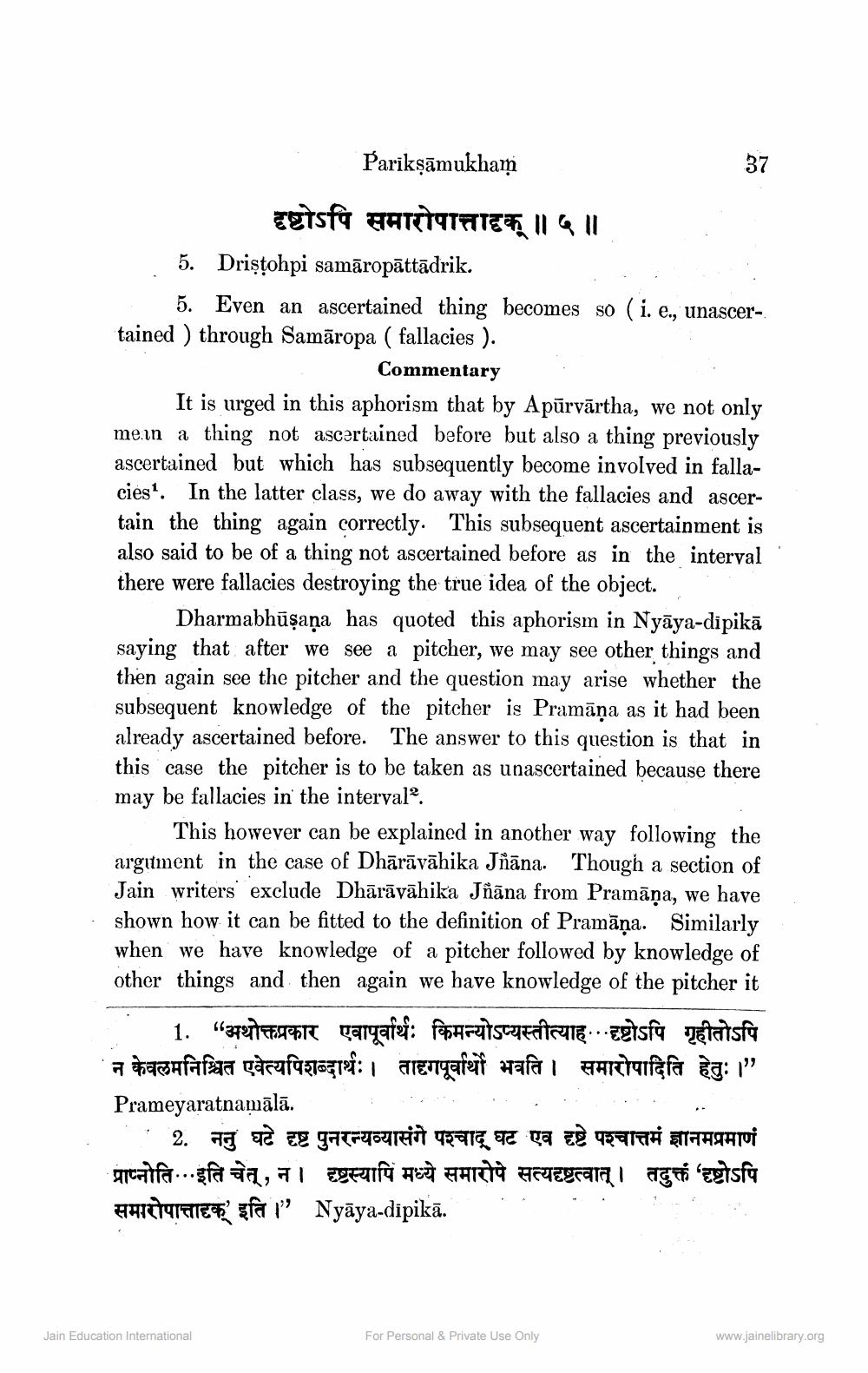________________
Parikṣāmukham
reìsfa Barcì¶rate= || & ||
5. Driştohpi samāropāttādrik.
5. Even an ascertained thing becomes so (i. e., unascertained) through Samaropa ( fallacies ).
Commentary
37
It is urged in this aphorism that by Apurvārtha, we not only mean a thing not ascertained before but also a thing previously ascertained but which has subsequently become involved in fallacies1. In the latter class, we do away with the fallacies and ascertain the thing again correctly. This subsequent ascertainment is also said to be of a thing not ascertained before as in the interval there were fallacies destroying the true idea of the object.
Dharmabhūṣaṇa has quoted this aphorism in Nyāya-dipikā saying that after we see a pitcher, we may see other things and then again see the pitcher and the question may arise whether the subsequent knowledge of the pitcher is Pramāņa as it had been already ascertained before. The answer to this question is that in this case the pitcher is to be taken as unascertained because there may be fallacies in the interval2.
This however can be explained in another way following the argument in the case of Dhārāvāhika Jñana. Though a section of Jain writers exclude Dhārāvāhika Jñana from Pramāņa, we have shown how it can be fitted to the definition of Pramāņa. Similarly when we have knowledge of a pitcher followed by knowledge of other things and then again we have knowledge of the pitcher it
1. “ अथोक्तप्रकार एवापूर्वार्थः किमन्योऽप्यस्तीत्याह · · दृष्टोऽपि गृहीतोऽपि a àazafafaa çàcufqqızı: enqafut wafa | aadunfèfa Èg: 1”
Jain Education International
Prameyaratnamālā.
2. ननु घटे दृष्ट पुनरन्यव्यासंगे पश्चाद् घट एव दृष्टे पश्चात्तमं ज्ञानमप्रमाणं प्राप्नोति... इति चेत्, न । दृष्टस्यापि मध्ये समारोपे सत्यदृष्टत्वात् । तदुक्तं 'दृष्टोऽपि Nyāya-dipika.
समारोपात्तादृक्' इति ।”
For Personal & Private Use Only
www.jainelibrary.org




